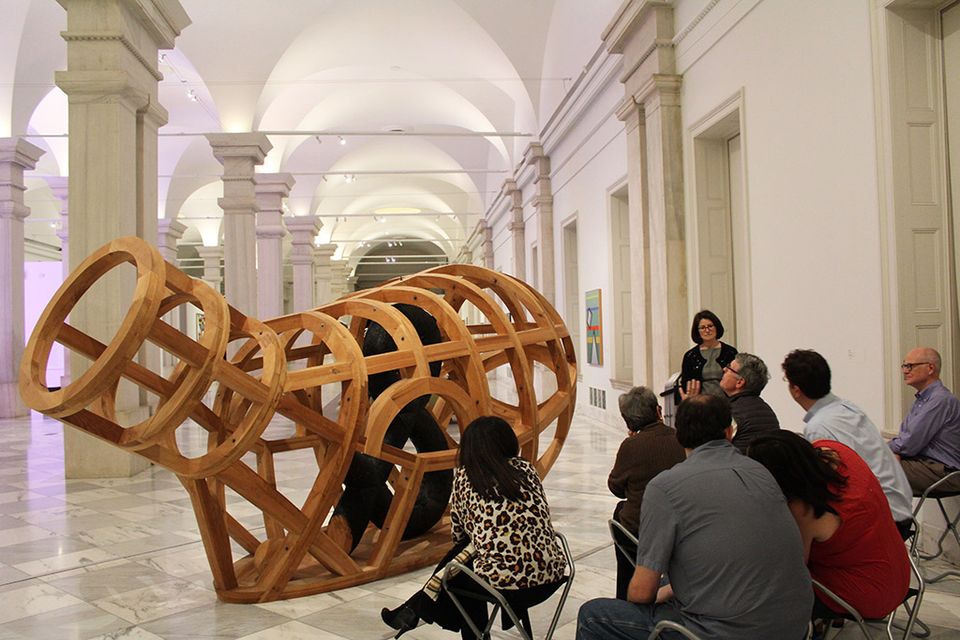

Each month, visitors to SAAM are invited to participate in a discussion-based program called Conversation Pieces. Spending an hour with a single work of contemporary art, participants engage in an open-ended experience of guided looking and discussion facilitated by Joanna Marsh, Senior Curator of Contemporary Interpretation. Marsh wrote about the theory behind the program in a previous blog post. Here's a taste of November's conversation.
From the outset of our conversation about Martin Puryear's Vessel, it was clear that the large-scale sculpture sparked the curiosity and imagination of our group. Participants had no shortage of questions about the artwork: Is it meant to be a ship? An astronomical object? An allusion to Jonah and the Whale? Why is there a black ampersand inside the wooden structure?
Senior Curator of Contemporary Interpretation Joanna Marsh broadened our perspective on the piece by showing us examples of other Puryear sculptures and drawings in which he experiments with similar forms. This prompted our group to notice the sculpture could be seen as a human head, with its face flat against the ground. There are curved pieces of wood on either side that suddenly look like ears when viewed with this in mind.
The meaning of the ampersand seemed to dominate much of our discussion. Some people noted that the wooden ball sitting next to it could be read as a period, and wondered what message Puryear might be sending by juxtaposing these two symbols from our written language. We talked about how the ampersand is used in writing to connect things and suggests addition, whereas the period is used for closure. If we imagine the wooden structure to be a head, one person noted, the ampersand and period might represent thought.
We also discussed the significance of the ampersand's striking blackness and its unusual materials: wire mesh coated with tar. One participant observed that the ampersand appears to be suspended from the wooden structure by a shackle. This led the group to wonder if Puryear was intentionally invoking dark periods of African American history. Might this "vessel" be a reference to a slave ship? Marsh shared with us that the artist spent two years in Sierra Leone with the Peace Corps, which sparked thinking about the possible African stylistic influences in the piece.
The many layers of potential meaning we uncovered by our exploration of Puryear's sculpture seemed only to deepen our group's interest throughout the hour. In the end, it seemed that the ampersand was a fitting symbol of our conversation—it felt like we could have continued to say "AND" infinitely, finding more and more possibilities in the artwork.
The next Conversation Pieces discussion will be held on Wednesday, December 14th at 6 p.m. No advance registration is required for this free program.
















